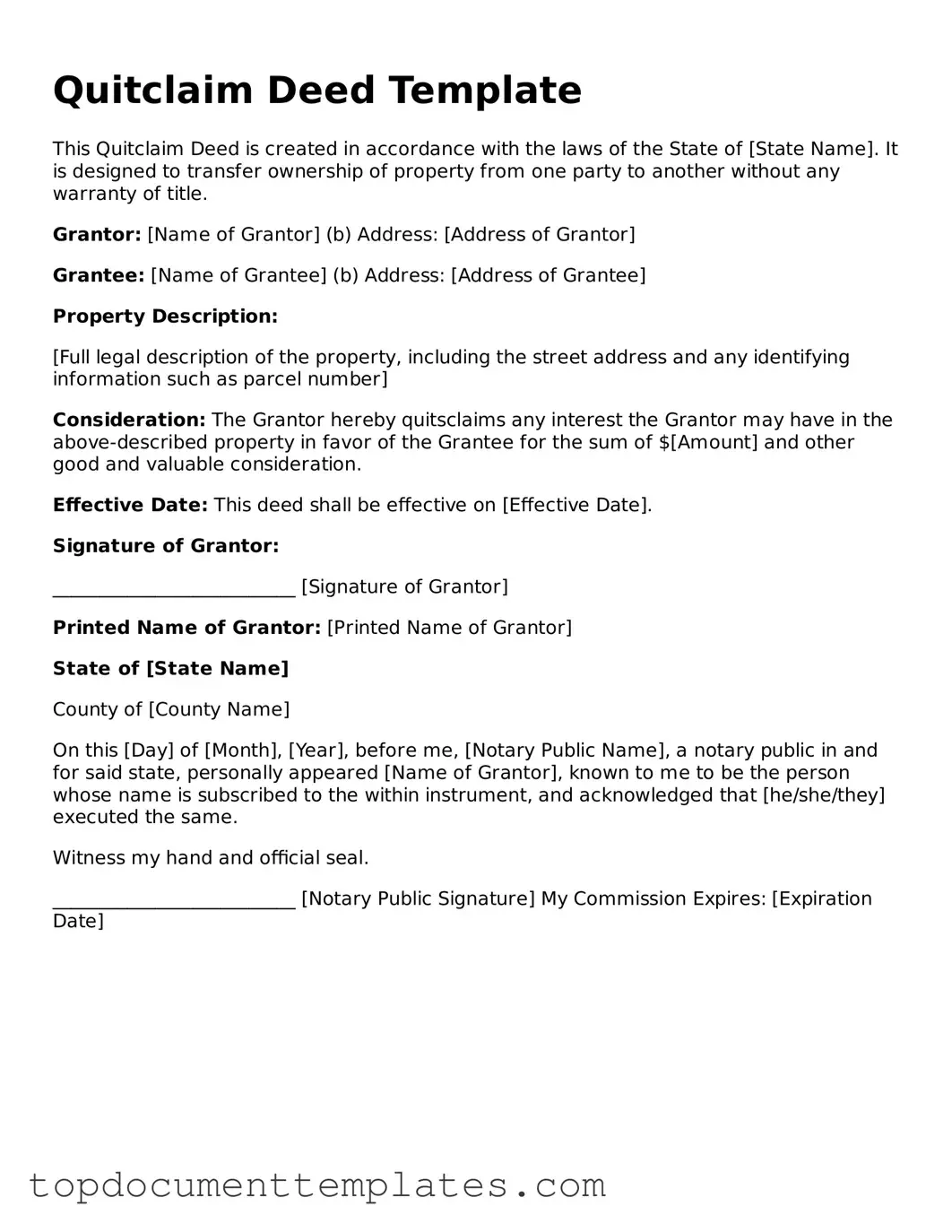Official Quitclaim Deed Template
A Quitclaim Deed is a legal document that allows an individual to transfer their interest in a property to another party without making any guarantees about the title's validity. This form is often used in situations where the parties know each other, such as family transfers or divorces. Understanding how to properly fill out this form is crucial for ensuring a smooth transfer of property rights; click the button below to get started.
Open This Form
